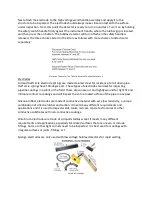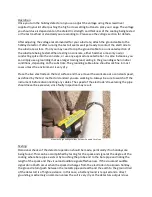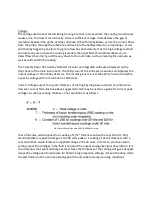
Next attach the electrode to the high voltage wand handle assembly and apply it to the
structure to be inspected. The electrode should always make close contact with the surface
under inspection. From this point the detector is ready to turn on and test. Turn it on by holding
the safety switch handle firmly against the instrument handle, where the rubber grip is located,
and then press the on button. The holiday detector will turn off when the safety handle is
released. The three choices listed in the kit are as follows with more choices to attach sold
separately:
Electrode Choices for The Tinker & Rasor APS Holiday Detector Kit
Electrodes
Full and half circle electrode springs are made stainless steel for resistance to roll down pipe.
Half circle springs have 190-degree arc. These types of electrodes are ideal for inspecting
pipeline coatings in a plant or the field. These are square cut and tightly wound for tight fit and
intimate contact to coatings and will inspect the entire coated surface of the pipe in one pass.
Silicone-rubber electrodes are made of conductive material with very low resistivity, a unique
combination of silicone rubber and carbon. It meets many different requirements and
applications and it is used to inspect welds, tanks, rail cars, concrete structures or other
conductive substrates with non-conductive coatings.
Wire brush electrodes are made of crimped stainless steel. It meets many different
requirements and applications, especially for coated surfaces that are uneven or include
fittings, bolts, or other tight corners need to be inspected. It is best used for coatings with
irregular surfaces or joints, fittings, ect.
Sponge electrodes are only used with low voltage holiday detectors for rapid wetting.
External Electrodes























